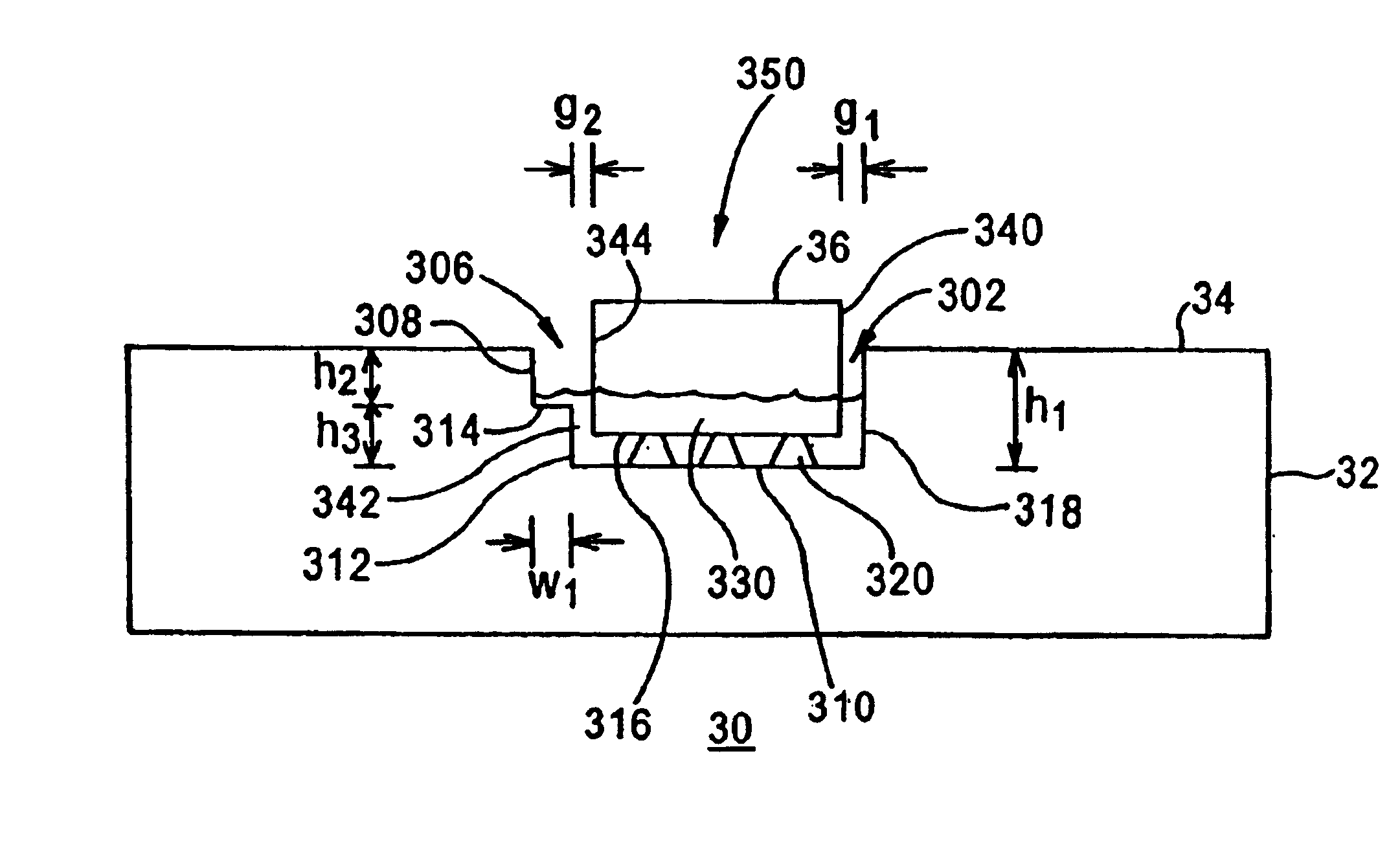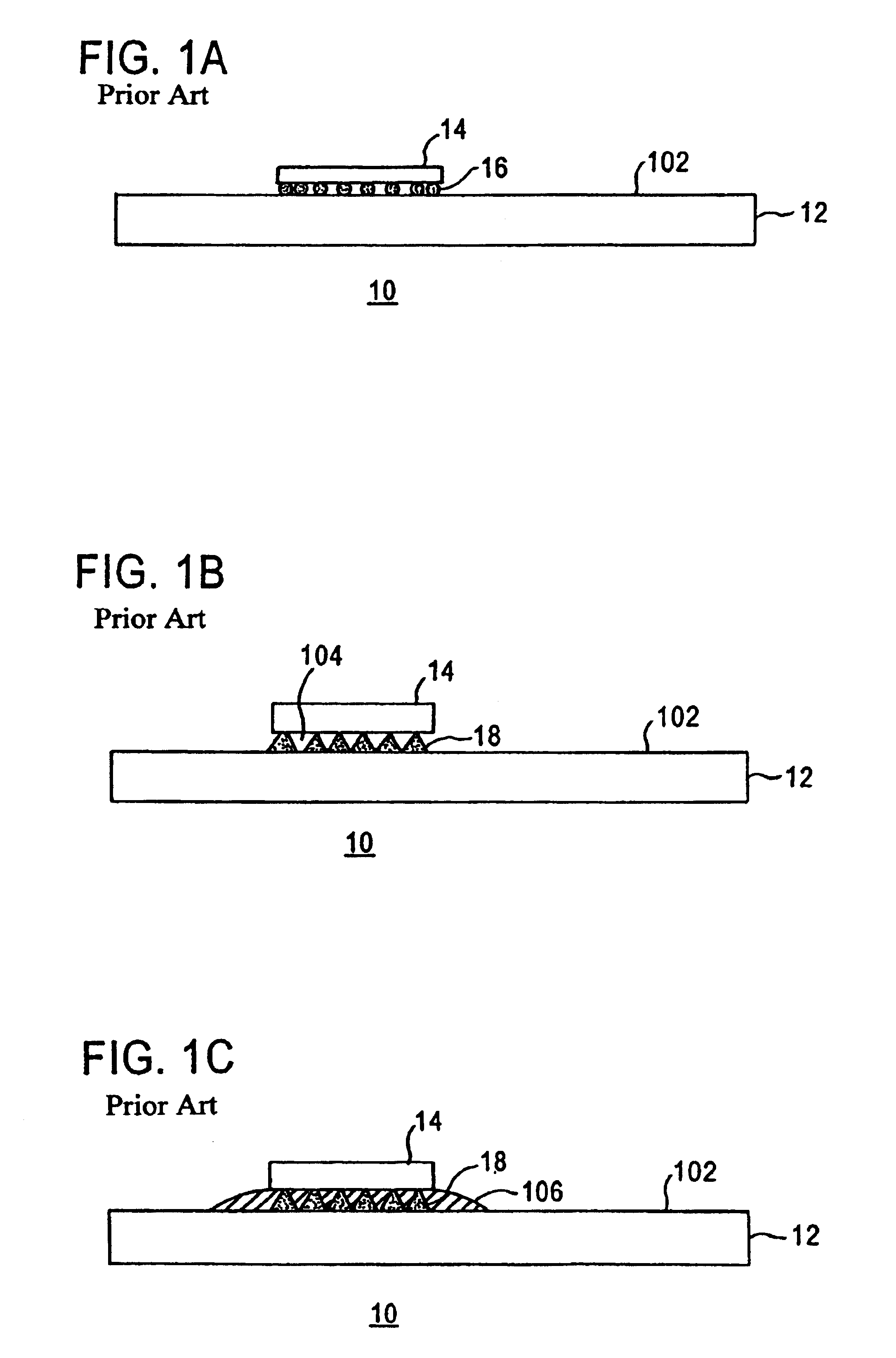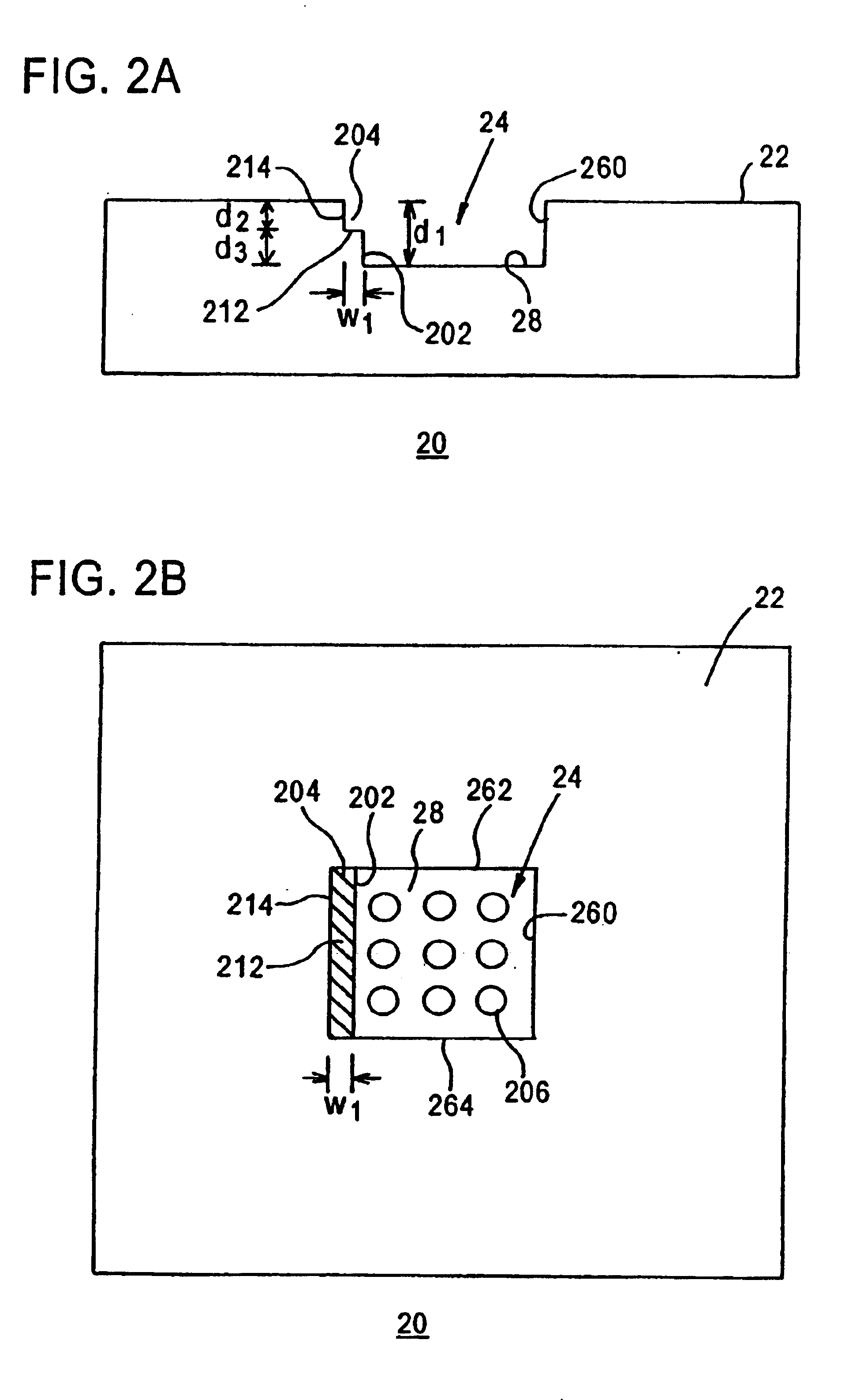Package and method for making an underfilled integrated circuit
a technology for integrated circuits and packaging, applied in the field of packaging and method for making an integrated circuit, can solve the problems of poor application effect of underfill material, low production efficiency, and inability to meet the requirements of the package assembly, etc., and achieve the effect of efficient and complete application of underfill material
- Summary
- Abstract
- Description
- Claims
- Application Information
AI Technical Summary
Benefits of technology
Problems solved by technology
Method used
Image
Examples
Embodiment Construction
The present invention provides overcomes the deficiencies in the prior art by providing a unique package board having a depression that receives and holds in place an integrated circuit die, wherein at least one wall of the depression has an for receiving underfill material.
FIGS. 2A and 2B depict a side cross-sectional view and a top view, respectively, of an exemplary package board 20 according to the present invention. The package board 20 has a top surface 22 and contains a depression 24. The depression 24 has a floor 28, three substantially vertical walls 260, 262, 264 and indented wall 202. Indented wall 202 contains indentation 204. The indentation 204 has a base 212 and a bulkhead 214. The base 212 of indentation 204 lies at an indentation base height d3 above the floor 28 of the depression 24. The base 212 of indentation 204 lies at an indentation base depth d2 lower than the top surface 22. The floor 28 lies at a depression floor depth d1 lower than the top surface 22. Thus...
PUM
 Login to View More
Login to View More Abstract
Description
Claims
Application Information
 Login to View More
Login to View More - R&D
- Intellectual Property
- Life Sciences
- Materials
- Tech Scout
- Unparalleled Data Quality
- Higher Quality Content
- 60% Fewer Hallucinations
Browse by: Latest US Patents, China's latest patents, Technical Efficacy Thesaurus, Application Domain, Technology Topic, Popular Technical Reports.
© 2025 PatSnap. All rights reserved.Legal|Privacy policy|Modern Slavery Act Transparency Statement|Sitemap|About US| Contact US: help@patsnap.com



